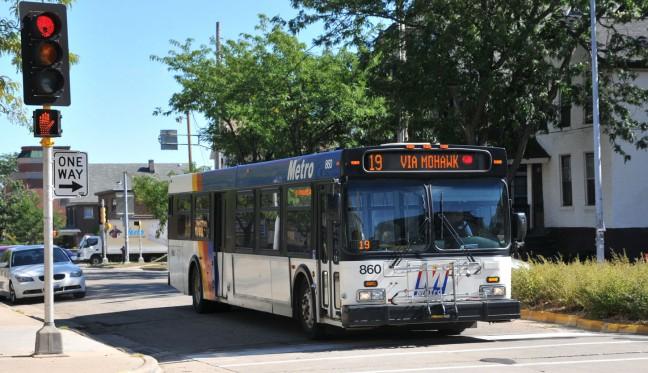After enjoying record ridership for five years, the city’s public transit service suffered a loss in 2015.
Metro Transit experienced about a 6 percent decrease in riders in 2015, dropping from 15.2 million riders in 2014 to 14.4 million, resulting in a $500,000 revenue loss, Ald. David Ahrens, District 15 said.
Lower gas prices in 2015 contributed to the decrease in ridership, Menzie Chinn, University of Wisconsin professor of economics, said.
“Holding everything else constant, with the decrease in gasoline prices the relative cost of driving, especially with the time potentially saved, many individuals will substitute driving their cars as a means of transport,” Chinn said.
Overcrowding is another contributing factor, Mick Rusch, Metro Transit marketing and customer service manager, said. He said potential riders may take into account the overcrowding and elect to drive because gas is cheap.
The decrease in riders is not a substantial issue for Metro Transit, Rusch said, as they still ended the year with a $1.5 million surplus due to vacant positions and lowered fuel costs.
Rusch said the decrease has been an eye-opener for Metro Transit, encouraging them to look for solutions to overcrowding and ways to make public transportation more appealing despite low gas prices.
“I wouldn’t say this loss in ridership is going to be overly concerning for us, but it does show us that we need to find a solution for our overcrowded bus situation,” he said.
Rusch said Metro Transit hopes to resolve the issue by applying for a federal grant to expand its facilities in 2016. The grant would enable Metro Transit to increase its capacity and prevent overcrowding.
Metro Transit is currently at capacity, operating 210 buses out of a facility meant to house 170, Rusch said.
“Obviously, overcrowded buses can’t compete with low gas prices, so it makes us look at things and figure out a way to address these issues,” he said. “That is something we want to do with our new bus garage. We need to find ways to expand transit service in Madison so that we are more enticing than driving a car, even with the low gas prices.”












